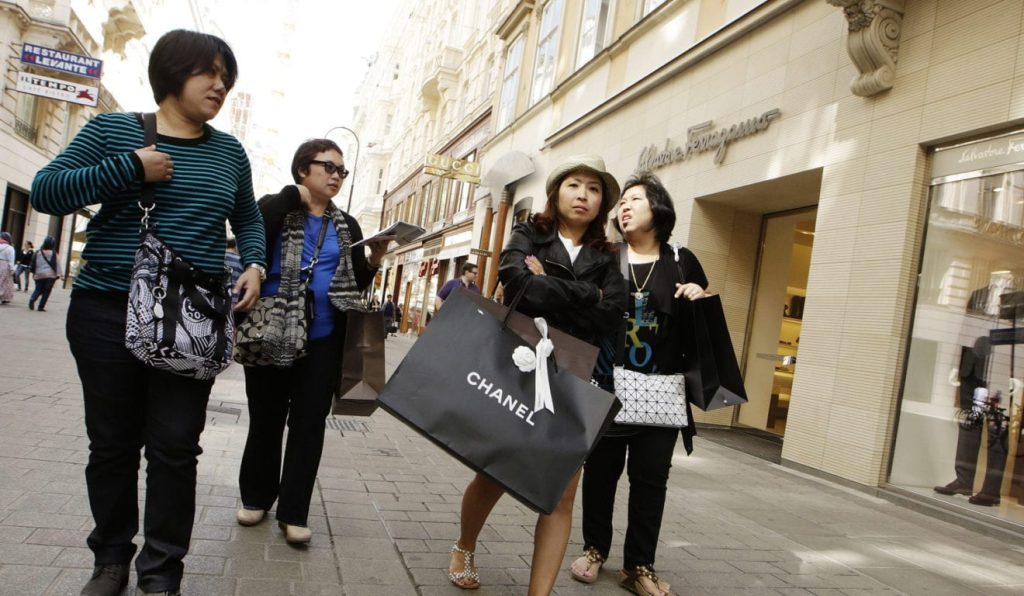
In this article we will look at the main differences between Chinese and Western tourists. Understanding these cultural and behavioral differences is crucial for any business operating in the tourism industry wishing to attract diverse international clientele.
We will look at key aspects such as travel preferences, purchasing behavior, cultural expectations and differences in decision making. By the end of this article, you will have all the information you need to tailor your services and marketing strategies, enabling you to take full advantage of the growing demand from Chinese tourists in Western destinations.
1. Travel Preferences
Travel preferences among Chinese tourists have experienced significant changes in recent years. With economic growth and rising living standards in China, more and more Chinese citizens are exploring international travel destinations.
Popular Destinations
According to recent data, Western tourists tend to show a preference for traditional and well-known destinations such as Paris, Rome and New York.
On the other hand, Chinese tourists have shown increasing interest in exploring destinations like Austria, France and Spain as these countries ranked as the top three most popular destinations in Europe for Chinese tourists.
Growth in hotel bookings by Chinese tourists in major European destinations compared to 2019 (January 1-15, 2023).
Destination | Growth rate |
Austria | 417.1% |
France | 318.5% |
Spain | 299.7% |
Italy | 284.6% |
United Kingdom | 274.8% |
Germany | 258.9% |
Switzerland | 147.4% |
Trip Duration
Western tourists tend to plan shorter trips, generally lasting one to two weeks. On the other hand, Chinese tourists often have longer vacation periods and prefer longer trips of three to four weeks to get the most out of their experience.
Approach to Travel
Western tourists often opt for independent travel, planning their own itineraries and booking accommodation and transportation separately.
In contrast, Chinese tourists show a preference for complete tour packages, which include accommodation, transportation and guided tours.
This is due to the perceived convenience and security offered by package tours. They mostly use Chinese online travel agencies, such as Ctrip or Fliggy.
In addition, here are some guides on how to get your restaurant started with marketing on Little Red Book and also some tips on how to prepare hotels for Chinese tourists.
2. Buying Behavior
The buying behavior of Chinese tourists has been the subject of great interest due to their growing purchasing power and influence on the global tourism industry.
As more and more Chinese tourists choose to travel abroad, understanding their purchasing patterns has become critical for tourism companies and destinations wishing to attract and satisfy this lucrative market.

Travel Spending
Chinese tourists have a well-established reputation for spending more compared to Western tourists when traveling abroad. This higher spending trend is attributed to several key factors influencing the buying behavior of Chinese tourists.
First, China's economic growth has led to a significant increase in the purchasing power of the country's middle and upper class.
According to Bain & Company’s “China Luxury Report 2021,” Chinese consumption of luxury goods is estimated to have increased by 48% in 2020, despite global economic challenges due to the COVID-19 pandemic.

In addition, Chinese tourists see traveling abroad as an opportunity to showcase their social status and enjoy exclusive experiences. According to a Nielsen report, 93% of Chinese tourists surveyed stated that spending on shopping during their trips is a way to express their success and social status.
Duty-Free Shopping
Duty-free shopping is a significant attraction for Chinese tourists in Western destinations. It also provides them with greater motivation to spend during their travels. According to Global Blue, a company specializing in duty-free shopping services, Chinese tourists accounted for approximately 32% of total global duty-free shopping in 2019.

3. Cultural Expectations
Chinese culture has a rich history and deep-rooted traditions, which influences Chinese tourists’ expectations and behaviors while traveling abroad. To provide them with a satisfactory experience, it is critical to understand and respond to their cultural needs appropriately.
By tailoring services, providing information in their native language and respecting their behavioral norms, you can establish a closer connection with Chinese tourists and ensure that their stay is memorable and enjoyable.

Language Barriers
The language barrier can be a challenge for Chinese tourists in Western destinations. Providing information and services in Mandarin Chinese, such as maps, menus and tour guides, can make a big difference in customer satisfaction and improve the overall Chinese tourist experience.
Behavioral Norms
Behavioral norms and etiquette differ between Western and Chinese cultures. Chinese tourists value courtesy and respect, so it is important to educate travel industry employees about Chinese customs and cultural practices in order to provide exceptional service.
4. Differences in Decision Making
There are significant differences in decision making between Western tourists and Chinese tourists.
These differences are due to cultural, social and economic factors that influence their preferences and behaviors during the process of planning and choosing tourist destinations.

Influence of Recommendations
Western tourists tend to base their travel decisions on information provided by friends, relatives and travel guides. On the other hand, Chinese tourists rely heavily on recommendations from other Chinese tourists and online reviews, especially on popular apps in China such as Xiaohongshu and Dianping.
Establishing a presence on these platforms and encouraging positive reviews can influence a Chinese tourist’s decision to choose a specific destination or service.
5. Conclusion
In summary, understanding the differences between Chinese and Western tourists is essential to developing effective marketing strategies and tailoring tourism services.
If you would like more information about Chinese outbound tourism and marketing in China to learn how to promote your business in China, contacting an agency like InfluChina can be a decisive factor.
Finally, here is a summary of the main differences between Chinese and Western tourists:
Western tourists | Chinese tourists | |
Most popular European destinations | Paris, Rome and New York | Austria, France and Spain |
Average daily spend | 140€ | 301€ |
Average trip duration | 14-21 days | 7-9 days |
Decision making | Information from friends, family and travel guides | Recommendations on Chinese social networks |
By recognizing travel preferences, buying behavior, cultural expectations and differences in decision making, you can stand out in an increasingly competitive marketplace.
Remember that personalization, attention to detail and a focus on customer satisfaction are key aspects of attracting and retaining Chinese tourists – be prepared to deliver unforgettable experiences and stand out from the competition!
FAQ
Frequently Asked Questions about Chinese and Western tourists
What are the popular destinations among Chinese tourists and Western tourists?
Western tourists tend to choose traditional and well-known destinations such as Paris, Rome or New York. In contrast, Chinese tourists are increasingly interested in exploring less conventional destinations, such as Barcelona, Berlin or Sydney.
What is the typical trip length for Western tourists and Chinese tourists?
Western tourists tend to plan shorter trips, usually of one or two weeks. On the other hand, Chinese tourists often have longer vacation periods and prefer longer trips, three to four weeks, to get the most out of their experience.
How do Western tourists and Chinese tourists differ in the way they travel?
Western tourists often opt for independent travel, planning their own itineraries and booking accommodation and transportation separately. In contrast, Chinese tourists show a preference for complete tour packages, including accommodation, transportation and guided tours.
What is the purchasing behavior of Chinese tourists during their travels?
Chinese tourists have a well-established reputation for spending more compared to Western tourists when traveling abroad. In addition, duty-free shopping is a significant attraction for them in Western destinations.
What are some cultural expectations Chinese tourists have when traveling abroad?
Language barriers can be a challenge for Chinese tourists in Western destinations. Providing information and services in Mandarin Chinese can make a big difference in customer satisfaction and improve their overall experience. In addition, Chinese tourists value courtesy and respect, so it is important to educate travel industry employees about Chinese customs and cultural practices to provide exceptional service.

